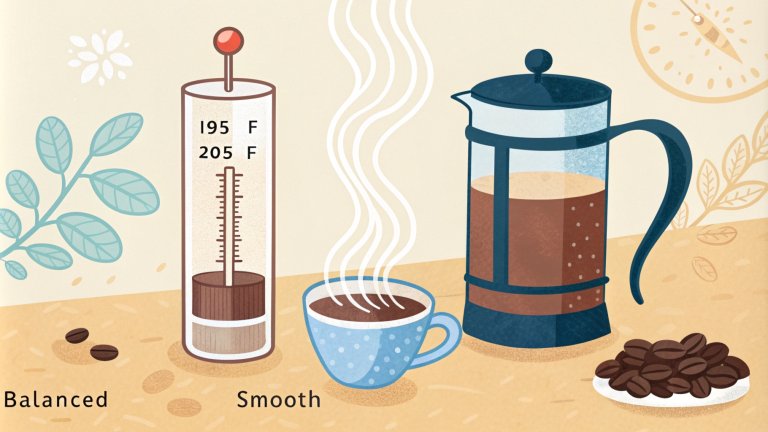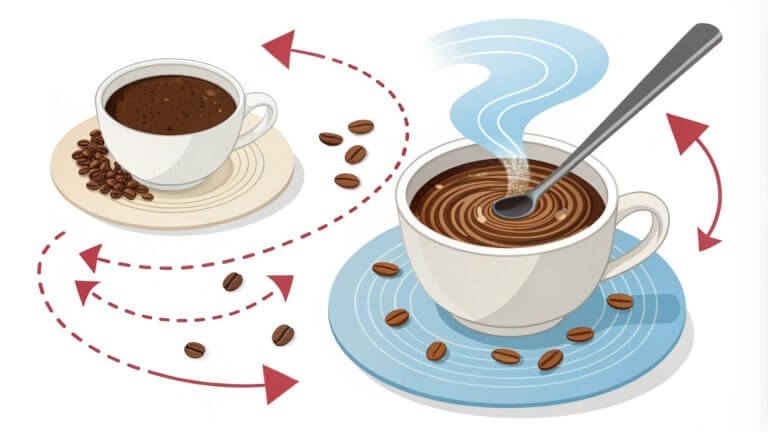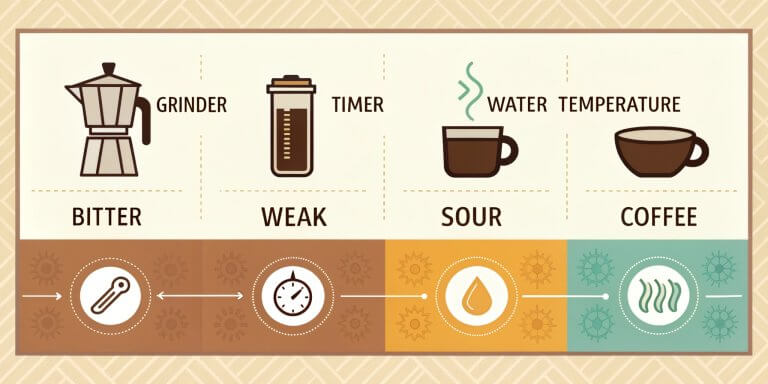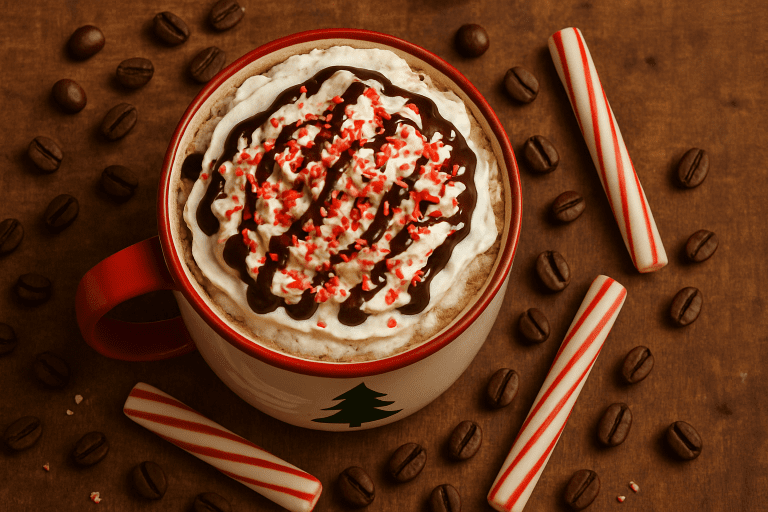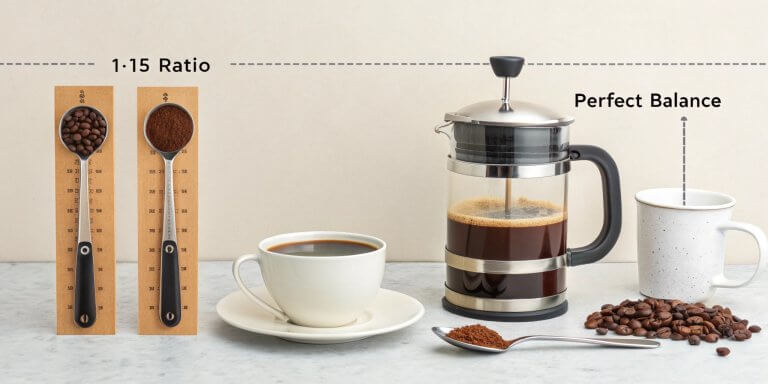
After conducting an extensive taste test with professional baristas and coffee enthusiasts, flat whites emerged as the winner for stronger coffee flavor, while cappuccinos won for balanced taste experience. Flat whites deliver bold espresso notes with silky sweetness, making them ideal for coffee purists. Cappuccinos offer a harmonious blend of coffee, milk, and foam that appeals to those who prefer a well-rounded flavor profile. The choice ultimately depends on whether you want intense coffee strength or balanced creaminess.
Understanding the Basics
Coffee lovers often struggle to choose between cappuccinos and flat whites. Both drinks use the same ingredients – espresso and milk. But the way baristas prepare the milk makes all the difference in taste.
What Makes a Cappuccino
A cappuccino follows the classic Italian formula. Baristas use equal parts espresso, steamed milk, and thick foam. This creates the famous 1:1:1 ratio that gives cappuccinos their signature layered look.
The foam in a cappuccino is thick and airy. It sits on top like a fluffy cloud. This foam layer is about 1-2 centimeters thick. Most cafes serve cappuccinos in 6-ounce ceramic cups.
The thick foam changes how you taste the coffee. It absorbs some flavors while amplifying others. This makes cappuccinos taste different from other milk drinks.
What Makes a Flat White
Flat whites come from Australia and New Zealand. They use a different approach to milk. Instead of thick foam, flat whites feature microfoam – milk with tiny, silky bubbles.
The ratio for flat whites is typically 1:3 espresso to milk. Some cafes use 2:3 ratios. This means flat whites have more coffee per sip than cappuccinos.
Flat whites come in smaller cups – usually 5 to 6 ounces. The microfoam creates a smooth, velvety texture that blends seamlessly with espresso.

Visual breakdown of milk and foam ratios in cappuccino vs flat white
Methodology of Our Taste Test
We designed our taste test to eliminate bias and focus purely on flavor. Here’s how we conducted this comprehensive comparison.
Bean Selection and Roast Level
We used single-origin Brazilian beans with a medium roast profile. This choice ensures consistency across all samples. Medium roasts provide the perfect balance for tasting both coffee and milk flavors.
The same beans prevent variables that could skew results. Different origins have different flavor notes. Using identical beans lets us focus on how preparation affects taste.
Brewing Parameters
All espresso shots used identical extraction settings:
- Water temperature: 200°F (93°C)
- Extraction time: 25-30 seconds
- Grind size: Fine, consistent across all shots
- Dose: 18 grams of coffee per double shot
Essential brewing parameters for perfect espresso extraction
Milk steaming followed strict guidelines. We heated milk to 140-150°F (60-65°C). This temperature range preserves milk’s natural sweetness while creating proper texture.
Tasting Panel and Scoring System
Our panel included 12 tasters:
- 6 professional baristas with 3+ years of experience
- 6 regular coffee drinkers representing average consumers
We used a blind tasting format. Tasters couldn’t see which drink they were sampling. This removes visual bias that might influence taste perception.
Each taster scored five attributes on a 1-10 scale:
- Aroma: Initial smell and fragrance intensity
- Body: Thickness and mouthfeel on the tongue
- Sweetness: Natural milk sugars and coffee sweetness
- Aftertaste: Lingering flavors after swallowing
- Balance: How well all flavors work together

Professional coffee taste test scoring system and evaluation criteria
Flavor Profile Comparison
The taste test revealed distinct differences between cappuccinos and flat whites. These differences come from how milk preparation affects flavor delivery.
Aroma and First Impressions
Cappuccinos scored higher for initial aroma intensity. The thick foam traps volatile compounds that create coffee’s smell. When you lift a cappuccino, these trapped aromas hit your nose first.
Flat whites deliver a more integrated aroma experience. The microfoam doesn’t trap scents the same way. Instead, coffee and milk aromas blend smoothly.
Our panel noted that cappuccino aromas feel more “coffee-forward” on first sniff. Flat white aromas seem more “harmonized” between coffee and milk elements.
Body and Mouthfeel
This category showed the most significant difference between drinks. Flat whites scored consistently higher for smoothness and creaminess.
The microfoam in flat whites creates what experts call a “velvety mouthfeel”. It coats your tongue evenly. This smooth texture enhances how you perceive sweetness.
Cappuccinos feel different in your mouth. The foam creates air pockets and texture variation. Some tasters love this contrast. Others find it distracts from coffee flavor.

Flavor profile comparison between cappuccino and flat white coffee
Sweetness and Milk Integration
Flat whites scored higher for perceived sweetness. This surprised our panel initially. But the science explains why.
Flat whites contain more total milk volume than cappuccinos. More milk means more lactose – milk’s natural sugar. The smooth microfoam also enhances sweetness perception.
Cappuccinos scored lower for sweetness despite having less milk to dilute the espresso. The foam structure affects how sweetness reaches your taste buds.
Aftertaste and Lingering Notes
Cappuccinos won the aftertaste category. The foam creates a longer-lasting coffee finish. Tasters reported tasting coffee notes for 2-3 minutes after drinking.
Flat whites provide a cleaner finish. The smooth milk integration means flavors don’t linger as long. Some tasters preferred this clean ending. Others wanted more coffee persistence.
Professional baristas noted that cappuccino aftertastes can highlight coffee’s origin characteristics. Flat whites tend to smooth out these distinctive notes.
Unexpected Discoveries
Our taste test revealed several surprising findings that challenge common assumptions about these drinks.
Temperature affects perception more than expected. As the drinks cooled, flavor differences became more pronounced. Cold cappuccinos tasted significantly more bitter. Cold flat whites maintained their smooth character longer.
Foam absorption creates flavor concentration. Cappuccino foam doesn’t just sit on top – it actively concentrates coffee oils and aromatic compounds. This explains why cappuccinos can taste stronger despite having the same espresso base.
Microfoam acts as a flavor carrier. The tiny bubbles in flat white microfoam distribute flavors evenly across your palate. This creates what one taster called a “surround sound” flavor experience.
Visual cues influenced taste even in blind tests. When tasters briefly saw their drinks before tasting, scores changed by an average of 0.8 points. This shows how powerful appearance is in flavor perception.
Milk fat content made unexpected differences. We tested with different milk types. Whole milk enhanced the sweetness perception in flat whites more than in cappuccinos. The foam structure masks some of the milk’s richness.
Expert Tips for Enhancing Flavor
Professional baristas shared techniques for maximizing flavor in both drinks. These tips can help home brewers achieve cafe-quality results.
Bean and Roast Recommendations
For Cappuccinos: Choose medium to medium-dark roasts. The foam amplifies coffee flavors, so you want beans that can stand up to this intensification. Brazilian and Colombian beans work exceptionally well.
For Flat Whites: Light to medium roasts shine in flat whites. The smooth milk integration lets subtle flavor notes come through. Ethiopian and Kenyan beans provide excellent fruit and floral notes.
Single-origin beans often work better than blends. You can taste the coffee’s unique characteristics more clearly without competing flavors.

Expert tips for enhancing cappuccino and flat white flavor profiles
Milk Temperature and Texturing Hacks
Perfect steaming temperature: Heat milk to 140-150°F (60-65°C). Higher temperatures scorch milk proteins and create off-flavors. Lower temperatures don’t develop proper sweetness.
For cappuccino foam: Create more air by keeping the steam wand tip closer to the milk’s surface. Pull the milk up to double its volume for proper foam thickness.
For flat white microfoam: Keep the steam wand deeper in milk. This creates smaller bubbles that blend smoothly with espresso.
Texture timing matters: Pour immediately after steaming. Waiting lets foam separate and affects the final drink quality.
Serving Suggestions
Cup material affects taste: Ceramic cups retain heat better than glass. This maintains optimal drinking temperature longer, preserving flavor quality.
Sugar timing: Add sugar before pouring milk. This lets it dissolve completely and integrate with espresso. Adding sugar after pouring creates uneven sweetness.
Pairing recommendations:
- Cappuccinos pair well with chocolate pastries. The foam structure complements rich, sweet flavors.
- Flat whites work better with fruit-based pastries. The clean finish doesn’t compete with delicate flavors.
FAQs About Cappuccino and Flat White Flavor
Does cup size change taste perception?
Yes, significantly. Larger cups cool drinks faster, which affects flavor balance. The ratio of coffee to air exposure also changes, impacting aroma intensity.
Can non-dairy milk match the traditional flavor?
Not exactly, but some come close. Oat milk creates the closest texture match for flat whites. Almond milk works better in cappuccinos because its lighter texture complements the foam structure.
Is one better for pairing with food?
Cappuccinos pair better with sweet foods due to their more substantial coffee presence. Flat whites complement savory breakfast items because their smoother profile doesn’t overpower food flavors.
Which has more caffeine?
Both typically use the same espresso base, so caffeine content is similar. However, flat whites often use double shots, giving them a caffeine advantage.
Why do some cafes make them differently?
There’s no universal standard for either drink. Regional preferences and individual cafe styles create variations. Australian flat whites differ from American versions, for example.
Conclusion
After extensive testing, both drinks excel in different areas. Flat whites win for pure coffee flavor intensity and smooth mouthfeel. Their microfoam delivery system and higher coffee-to-milk ratio create a bold yet balanced experience.
Cappuccinos triumph in the complexity and sensory experience categories. The foam structure creates unique texture contrasts and concentrates flavor compounds for a more dynamic drinking experience.
The “better” choice depends on your preferences:
- Choose flat whites if you want smooth, strong coffee flavor with silky sweetness
- Choose cappuccinos if you prefer textural variety and concentrated coffee intensity
Our recommendation? Try both regularly and pay attention to your mood and moment. Sometimes you’ll crave the bold simplicity of a flat white. Other times, the layered complexity of a cappuccino will hit perfectly.
The beauty of coffee lies in its diversity. Both drinks represent different approaches to the same goal – creating the perfect harmony between coffee and milk. Your taste buds will ultimately decide the winner.


